Chief Constable Adam Palmer
Adam Palmer
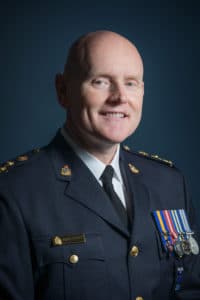 Chief Constable Adam Palmer took command as the 31st Chief Constable of the Vancouver Police Department on May 6, 2015. Chief Palmer was born and raised in the Vancouver area.
Chief Constable Adam Palmer took command as the 31st Chief Constable of the Vancouver Police Department on May 6, 2015. Chief Palmer was born and raised in the Vancouver area.
Prior to beginning his career with the VPD in 1987, Chief Palmer worked as a correctional officer. He spent the first 13 years of his career working as a patrol officer in East Vancouver. He has also worked in the Jail, the Crowd Control Unit, the Gang Crime Unit, the Organized Crime Agency of British Columbia, Police/Crown Liaison and the Planning, Research and Audit Section.
As a sergeant, he was extensively involved in the development of the VPD’s Strategic Plan and managed a long-term review of policing operations at the VPD. The Operational Review project was a progressive approach in modernizing and identifying efficiencies within the VPD. The Operational Review resulted in improved departmental business practices and the addition of 194 police officers and 95 civilian professional positions between 2005 and 2007. This research has attracted interest from across North America and abroad.
As an inspector, he was the officer in charge of Patrol District 2, the Northeast quadrant of Vancouver. During the 2010 Winter Olympics, Chief Palmer was seconded to the RCMP Integrated Security Unit as the Venue Commander for the Pacific Coliseum where he oversaw the security for the figure skating and short track speed skating events.
Upon promotion to deputy chief in 2010, he was assigned to the Support Services Division, then later became the deputy chief in charge of the Investigation Division.
Chief Palmer has completed numerous policing and professional development courses throughout his career. He holds a bachelor of arts degree (Hons) and has completed two executive leadership programs with the FBI: Leadership in Counter-Terrorism (LinCT) and the National Executive Institute (NEI).
Chief Palmer was President of the Canadian Association of Chiefs of Police (CACP) from 2018-2020 and served on the CACP Board of Directors as Past President until August 2022. He served on the Board of Directors for the International Association of Chiefs of Police (IACP) from 2018 to 2020. In January 2019, Chief Palmer was elected to and currently serves on the Board of Directors for the Major Cities Chiefs Association (MCCA), which represents the largest police departments in the United States and Canada. Chief Palmer also serves as Chair of the Combined Forces Special Enforcement Unit (CFSEU) Board of Directors, is a member of the National Executive Committee for the Criminal Intelligence Service of Canada (CISC), the Metro Vancouver Transit Police Board of Directors, and the Criminology Advisory Committee for Kwantlen Polytechnic University. He is also a former Board member of the Canadian Police Knowledge Network (CKPN). In 2023, Chief Palmer became a Board Member for the Police Executive Research Forum (PERF), a police research and policy organization.
In 2009, Chief Palmer was invested as a Member of the Order of Merit of the Police Forces and in 2017 was promoted to the rank of Officer of the Order of Merit of the Police Forces. In 2020, in recognition of the national and international scope of his service and leadership, the Governor General of Canada advanced Chief Palmer to the highest rank within the Order of Merit of the Police Forces, the rank of Commander. In 2021, Chief Palmer received the Major Cities Chiefs Association Leadership Award, the first Canadian police officer to receive this honour. In 2022, he received the CACP’s Recognition Award for developing a national mentorship program for police executive leaders. He is the recipient of nine Vancouver Police Department Commendations and is a former VPD Police Officer of the Year.
Throughout his career, Chief Palmer has acutely recognized the importance of continually working at maintaining the confidence and trust of community. As well, he is seen as a chief that has fully committed to supporting over 1500 sworn officers and more than 500 civilian professionals.
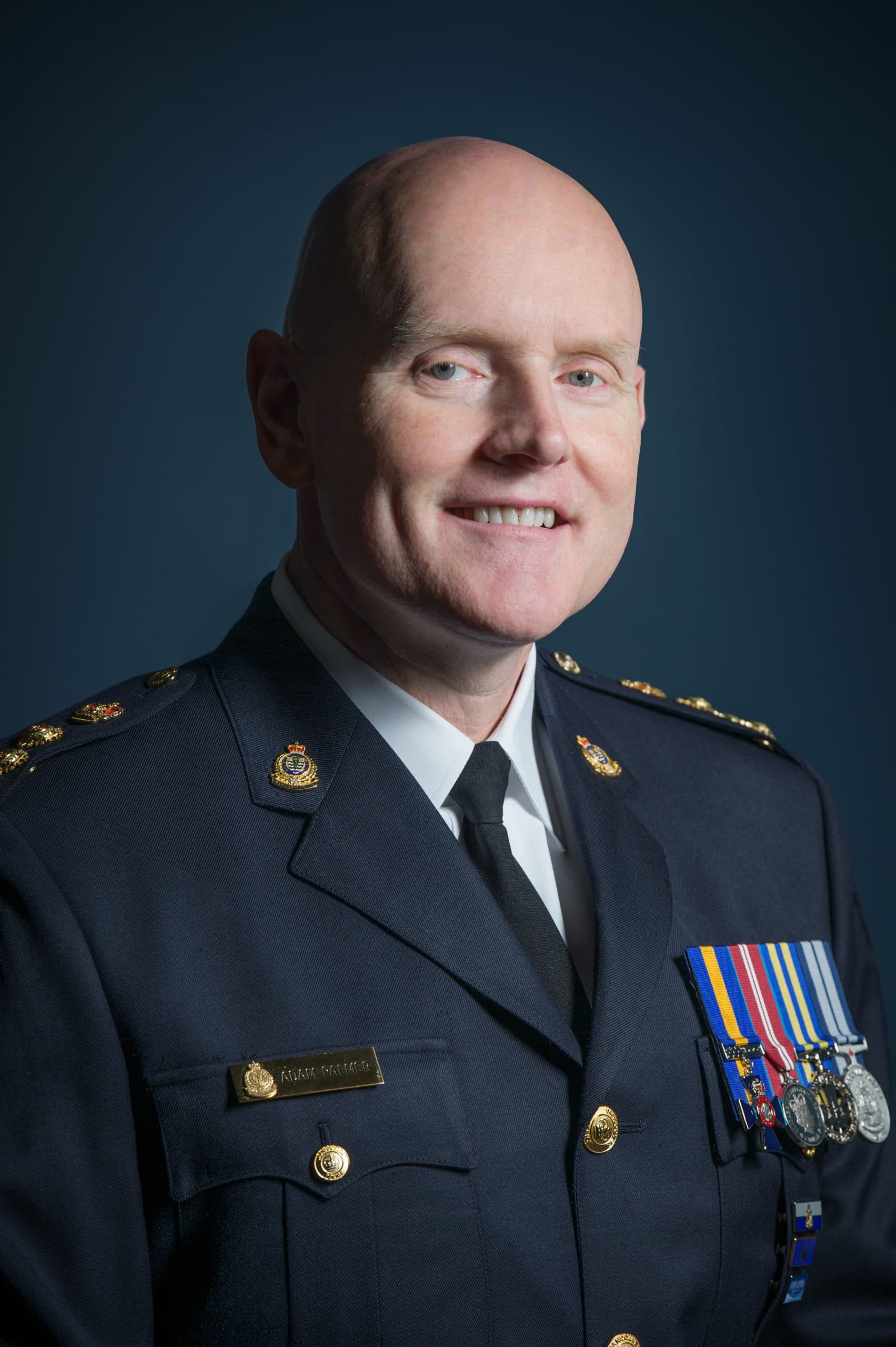
Adam Palmer
2015-Present
Chief Constable Adam Palmer took command as the 31st Chief Constable of the Vancouver Police Department on May 6, 2015. Chief Palmer was born and raised in the Vancouver area.
Prior to beginning his career with the VPD in 1987, Chief Palmer worked as a correctional officer. He spent the first 13 years of his career working as a patrol officer in East Vancouver. He has also worked in the Jail, the Crowd Control Unit, the Gang Crime Unit, the Organized Crime Agency of British Columbia, Police/Crown Liaison and the Planning, Research and Audit Section.
As a sergeant, he was extensively involved in the development of the VPD’s Strategic Plan and managed a long-term review of policing operations at the VPD. The Operational Review project was a progressive approach in modernizing and identifying efficiencies within the VPD. The Operational Review resulted in improved departmental business practices and the addition of 194 police officers and 95 civilian professional positions between 2005 and 2007. This research has attracted interest from across North America and abroad.
Adam Palmer
Chief Constable Adam Palmer took command as the 31st Chief Constable of the Vancouver Police Department on May 6, 2015. Chief Palmer was born and raised in the Vancouver area.
Prior to beginning his career with the VPD in 1987, Chief Palmer worked as a correctional officer. He spent the first 13 years of his career working as a patrol officer in East Vancouver. He has also worked in the Jail, the Crowd Control Unit, the Gang Crime Unit, the Organized Crime Agency of British Columbia, Police/Crown Liaison and the Planning, Research and Audit Section.
As a sergeant, he was extensively involved in the development of the VPD’s Strategic Plan and managed a long-term review of policing operations at the VPD. The Operational Review project was a progressive approach in modernizing and identifying efficiencies within the VPD. The Operational Review resulted in improved departmental business practices and the addition of 194 police officers and 95 civilian professional positions between 2005 and 2007. This research has attracted interest from across North America and abroad.
As an inspector, he was the officer in charge of Patrol District 2, the Northeast quadrant of Vancouver. During the 2010 Winter Olympics, Chief Palmer was seconded to the RCMP Integrated Security Unit as the Venue Commander for the Pacific Coliseum where he oversaw the security for the figure skating and short track speed skating events.
Upon promotion to deputy chief in 2010, he was assigned to the Support Services Division, then later became the deputy chief in charge of the Investigation Division.
Chief Palmer has completed numerous policing and professional development courses throughout his career. He holds a bachelor of arts degree (Hons) and has completed two executive leadership programs with the FBI: Leadership in Counter-Terrorism (LinCT) and the National Executive Institute (NEI).
Chief Palmer was President of the Canadian Association of Chiefs of Police (CACP) from 2018-2020 and served on the CACP Board of Directors as Past President until August 2022. He served on the Board of Directors for the International Association of Chiefs of Police (IACP) from 2018 to 2020. In January 2019, Chief Palmer was elected to and currently serves on the Board of Directors for the Major Cities Chiefs Association (MCCA), which represents the largest police departments in the United States and Canada. Chief Palmer also serves as Chair of the Combined Forces Special Enforcement Unit (CFSEU) Board of Directors, is a member of the National Executive Committee for the Criminal Intelligence Service of Canada (CISC), the Metro Vancouver Transit Police Board of Directors, and the Criminology Advisory Committee for Kwantlen Polytechnic University. He is also a former Board member of the Canadian Police Knowledge Network (CKPN). In 2023, Chief Palmer became a Board Member for the Police Executive Research Forum (PERF), a police research and policy organization.
In 2009, Chief Palmer was invested as a Member of the Order of Merit of the Police Forces and in 2017 was promoted to the rank of Officer of the Order of Merit of the Police Forces. In 2020, in recognition of the national and international scope of his service and leadership, the Governor General of Canada advanced Chief Palmer to the highest rank within the Order of Merit of the Police Forces, the rank of Commander. In 2021, Chief Palmer received the Major Cities Chiefs Association Leadership Award, the first Canadian police officer to receive this honour. In 2022, he received the CACP’s Recognition Award for developing a national mentorship program for police executive leaders. He is the recipient of nine Vancouver Police Department Commendations and is a former VPD Police Officer of the Year.
Throughout his career, Chief Palmer has acutely recognized the importance of continually working at maintaining the confidence and trust of community. As well, he is seen as a chief that has fully committed to supporting over 1500 sworn officers and more than 500 civilian professionals.
To learn more about the Chief Constables of the Vancouver Police Department,
beginning in 1886, click on the photos below.
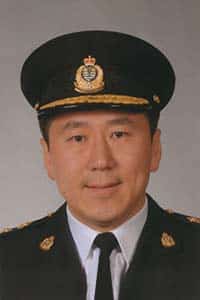 Jim Chu
Jim Chu
Jim Chu was the first Asian chief of a major Canadian police force. The oldest son of immigrant parents from Shanghai, he grew up in an eastside Vancouver neighbourhood. He joined the VPD after his graduation from Charles Tupper Secondary. He obtained a degree in business administration, as well as an MBA, and received the Commander of the Order of Merit (COM).
Notable events during his time as chief were the 2010 Olympics, the Stanley Cup riot, and the Missing Women Commission of Inquiry. He offered an unequivocal apology for mistakes the VPD made during the years that dozens of women went missing from the Downtown Eastside, and endorsed all policing recommendations made by Attorney General Wally Oppal. He served as president of the Canadian Association of Chiefs of Police (CACP) from 2012 to 2014.
Chief Chu lobbied for better services for people suffering from mental illness, for the use of technology in criminal investigations, and for initiatives in vulnerable communities, like SisterWatch and Lunch with the Chief. Sex work enforcement guidelines were developed, stating that “sex work involving consenting adults” would not be an enforcement priority.
Jim Chu retired at age 55, after 36 years with the force. A Vancouver Sun article published in January 2015 stated that Jim Chu felt dropping violent crimes rates were the most important achievement in his time as chief. He also stated that the best thing about being at the VPD was meeting his wife Vicki, a fellow police officer, and marrying her.
“Maintaining community support is a big priority for me, but I also know this support has to be earned,” says Chu in a 2007 Vancouver Sun article. “And we earn it by showing we deliver a professional police service with integrity and respect.”
When Chief Chu retired, Mayor Gregor Robertson expressed gratitude for the work he had done over the years. “He will be greatly missed by all of us here, especially those who have served with him at VPD,” he said. “I know all of us will miss his sense of humour.” (Vancouver Sun, January 2015)

Jim Chu
2007-2015
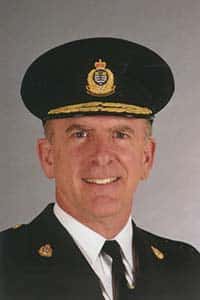 Jamie Graham
Jamie Graham
Jamie Graham became the Vancouver Police chief constable at age 53, after a 35-year career with the RCMP. He was known as an innovative thinker, who promoted community policing and embraced the concept of restorative justice. Personable and approachable, he related to everyone from the most junior constable to senior management, which went a long way to improve morale in the Department.
Chief Graham supported harm reduction, including safe injection sites and the Four Pillars approach. He took steps to improve the VPD’s ability to communicate with the public. During his time as chief, the VPD examined better ways for police to interact with people suffering from mental illness, and specialized multi-cultural programs were developed.
Chief Graham was chair of the National Strategy to Combat Outlaw Motorcycle Gangs, as well as the Gaming and Mental Health committees of the BC Association of Chiefs of Police. He also served as a board of governance member for the Combined Forces Special Enforcement Unit.
Notable events during his time as chief included the Stanley Park Six, the Frank Paul Inquiry, and the McMynn kidnapping.
When Chief Graham retired in 2007, he stated in a Vancouver Sun article that being Vancouver’s police chief was the highlight of his career.
“They say you always know when it is time, and that time for me is 2007.” (The Province, February 23, 2007)
Mayor Philip Owen described him as a “big, strapping cop…who understood drug policy reform and he was at the opening of the safe-injection site on hastings Street in his uniform. He stepped out and was counted and wasn’t afraid to state his opinions.” (Vancouver Sun, February 23, 2007)
Senator Larry Campbell and former Vancouver mayor, stated, “It’s a difficult job, but he performed very well. We made the right decision. He’s a very talented person. We picked the right person. We were fortunate to bring him in.” (Vancouver Sun, February 23, 2007)

Jamie Graham
2002-2007
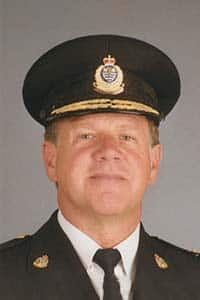 Terry Blythe
Terry Blythe
After 31 years with the VPD, including a nine-month stint as acting chief, Terry Blythe was sworn in as chief constable in 2000.
Born in Vancouver, Chief Blythe was a second-generation cop’s cop, who once walked the beat in the Downtown Eastside, and rose slowly and steadily through the ranks. He was described as a “solid person who will provide good, stable leadership and who is respected by other officers” in a December 1999 Vancouver Sun article.
Chief Blythe was known as outgoing and charismatic, a hardliner on drugs, a critic of lenient sentencing, and a proponent of community policing.
During his tenure as chief, Vancouver was experiencing a bloody turf war between gangs, and issues with grow-operations, as well as APEC and the Riot at the Hyatt. Carolyn Daley was appointed the first female deputy chief constable.
Chief Blyth placed importance on recruiting police officers who reflected the city’s multi-cultural mix, developing strong ties with community partners, and open communication with the media, the public, and especially with members of the Department.
In an interview with The Province in September 2000, Chief Blythe was quoted as saying, “If your organization is healthy and positive and people are being treated fairly, they are going to carry that into the community.”
He retired in 2002.

Terry Blythe
1999-2002
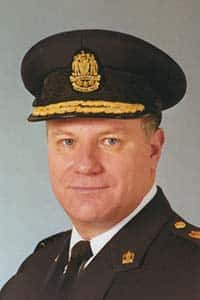 Bruce Chambers
Bruce Chambers
Bruce Chambers was born in St. Catherines, Ontario, and began his policing career at 18 with the Niagara Regional Police in 1967. After two years as the Chief of the Thunder Bay police, he became the chief constable of the Vancouver Police Department in 1997.
In a Vancouver Sun article in May 1997 just before he officially took command, Chief Chambers stated it was too early to outline his plans. “I plan to consult with the current chief, as well as other people inside and outside the force, before announcing any goals.”
Chief Chambers decided to focus on Vancouver’s rising property crime and the drug problems driving it. The city was experiencing home invasion robberies, and was known as Canada’s crime capital. During his time as chief, property crime declined by 43%, commercial break-ins by 43%, and residential break-ins by 22%. The city hosted the Asian Pacific Economic Conference, which became the largest security operation of its kind in Canada.
In 1997, Chief Chambers became the first police chief in Canada to walk in a Pride Parade.
Chief Chambers came to the VPD with a bachelor of arts degree and a BA in business administration from Brock University, and a master’s in business administration from the University of Toronto. He liked to read and hike in his spare time.
Relations between the Chief and senior members of the VPD deteriorated over many different issues, including his leadership style. In June of 1999, the Vancouver Police Board did not renew Chief Chamber’s contract.

Bruce Chambers
1997-1999
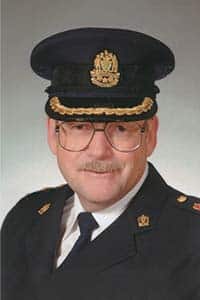 Raymond Canuel
Raymond Canuel
Raymond Canuel began his career with the VPD in 1966 as a custodial guard. He became a police officer in 1968, and in June 1994, he was sworn in as the VPD’s 26th chief constable.
Chief Canuel was known as an old-school, self-taught cop, who helped usher in computerization and geographic profiling. During his tenure, community policing centres began, and the Diversity and Domestic Violence and Criminal Harassment sections were formed. The Diversity Advisory Committee for the VPD was created, whose members included people from different religious groups, ethnic backgrounds, and the 2SLGBTQ+ community.
Gangs were a persistent issue in the city, and a 100-member task force was created to tackle gang crime. In his early days as Chief, the Stanley Cut Riot took place, which required over 500 VPD and RCMP officers to restore order.
In an interview with the Vancouver Sun in March 1994, VPD Sergeant Val Harrison described Chief Canuel as approachable, and that he had time for people – an attitude which filtered down. Another VPD officer said the chief had a “down-home comfortableness to him.”
In a March 1997 Vancouver Sun article written by Pete McMartin just before Chief Canuel retired, he was described as not looking like a cop.
“Canuel is not big or imposing: He doesn’t have the intimidating bulk of the cop stereotype. He wears glasses that soften his already mild face, he is 59, he is the grandfather of seven. When he retires in four months, he plans to play mediocre golf, indulge his interest in photography, and –and this is a new one on us – satisfy his passion for ‘garden railways.’”
Chief Canuel retired in July 1997 at age 59.

Raymond Canuel
1994-1997
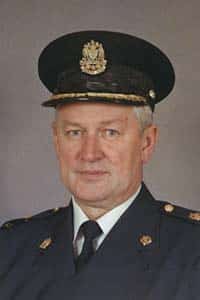 William Marshall
William Marshall
After a 36-year career, William Marshall was sworn in as VPD Chief Constable in January 1991 at age 47. He followed his father into policing, a few years after graduating from Gladstone Secondary.
Chief Marshall was described as being private, and an introvert who built his own furniture and enjoyed cycling and badminton
His first priorities were to contain the city’s gang problem and increase community policing programs, as well as boost the number of visible minority members on the force. The School Liaison program also began during his tenure.
While Chief, the city faced an increasing crime rate and a serious civilian staffing shortage, amid demands from city council to cut the police budget.
Chief Marshall resigned in September 1994, after a Police Act inquiry found him guilty of neglect of duty from an incident 10 years previous.
He was quoted in a March 1994 Vancouver Sun article, as saying, “During my tenure as chief constable, I am proud of the path which the department embarked, namely community-based policing, strategic planning and enriching constables’ involvement within the community.”

William Marshall
1991-1994
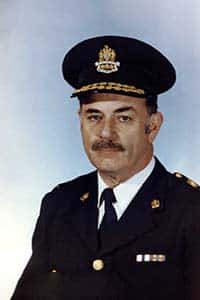 Robert Stewart
Robert Stewart
Robert Stewart was sworn in as chief constable in 1981. He went on to become the longest serving chief constable of the VPD.
Chief Stewart’s career in policing began in 1954, one year after the death of his father, a VPD homicide detective. Future generations of his family would also follow in the family footsteps.
He shared his philosophy on policing in a Vancouver Sun article in July 1981: “… ‘Keep the streets safe.’ That’s a measure of a society. If you’re still free to walk about and do your business, that indicates the community is safe.”
The Chief was also a proponent of ethnic diversity in the Department. He saw his growing up in multi-cultural East Vancouver as an advantage, and determined that the best way to serve ethnic communities in the city was through recruiting – and convincing families that policing was an honourable career.
Staff development was also important to Chief Stewart, including procedures for staff selection and training programs. He continued his own education throughout his career. When computers were proposed for police cars, Chief Stewart successfully lobbied for the Department to be in the pilot project. “…this may sound a bit biased, but Vancouver police have been in the forefront of most of the high-tech stuff.” (The Vancouver Sun, January 1991)
Chief Stewart was president of the Canadian Association of Chiefs of Police (CACP) from 1986 to 1987.
When Chief Stewart retired in 1991, he was quoted by The Vancouver Sun as saying, “I enjoyed every minute of it. I’ve enjoyed it because I was surrounded by an extremely gallant and professional group of officers.”

Robert Stewart
1981-1991
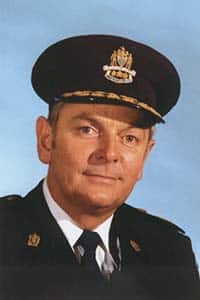 Don Winterton
Don Winterton
Don Winterton was considered young, at age 42, when he was promoted from inspector to chief constable. He grew up in a small prairie town, and was known as an approachable chief, who often wandered through the department, soliciting opinions, ideas, and criticism from all ranks.
In his 22-year career, he developed a thorough knowledge of fingerprint identification techniques and often testified in inquests and trials as an expert witness.
The Police Act came into being during his time as chief, as did 9-1-1 calling for emergencies. He continued the work of his predecessor, ensuring female police officers received the same basic training and had the same opportunities as men. As a community-minded police officer, he was a big proponent of crime prevention, and believed in the importance of police working with the community to identify and correct problems.
“Of course you respect the man because he knows so much about what he’s doing,” said a West End patrolman in a Province article in February 1974. “But I think you respect him even more because of the way he gets through to people. He really wants to know what they’re thinking, how they feel about things.”
Chief Winterton retired on January 9, 1981. He died July 28, 2011.

Don Winterton
1974-1981
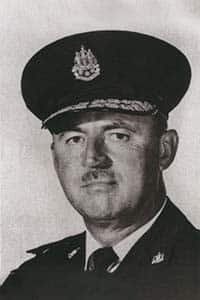 John Fisk
John Fisk
John Fisk was hired as a clerk constable and became a chief clerk in 1947. Aside from two years as a traffic superintendent, he stayed in administration, occasionally called out from behind his desk when extra help was needed. He was promoted to deputy chief in 1964, and four years later, he became Chief.
Chief Fisk was tall, at 6’6”, and described as quiet. He came from a police family and married into another. He believed that better police education and training, and the greater use of science and technology, were vital in the fight against crime.
Chief Fisk was also ahead of his time in his belief about how the drug problem and people addicted to drugs should be treated, which he shared in this Vancouver Sun article in February 1974:
“We are separating the criminal from the medical social problem. I think there must be stepped-up enforcement (against the trafficker) here, not only at a local scale but at a national scale because it is a national problem. I think there must be heavy penalties levied by the courts.
“On the other side, though, is the addict. Here we are dealing with a different problem entirely. The addict is a social problem and a very real medical problem. Dealing with this person as a criminal within our normal criminal justice procedure is accomplishing nothing.”
Chief Fisk retired in 1974, feeling the major changes facing the Department required “the attention of a younger and more energetic man.”
More than 700 people attended his retirement party, including Chief Justice Nathan Nemetz of the BC Supreme Court. The February 9, 1974 edition of The Province reported that Nemetz turned to Chief Fisk’s successor, Don Winterton, and said, “You are succeeding a big man, not only in stature but in heart.”
Chief Fisk died on March 16, 1990.

John Fisk
1968-1974
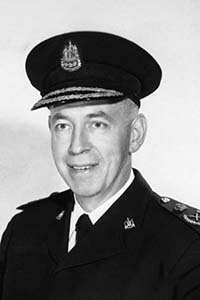 Ralph Booth
Ralph Booth
Ralph Booth became the 21st chief constable of the VPD in 1962. He also served as president of the Canadian Association of Chiefs of Police from 1966-1967.
Chief Booth advocated for metropolitan policing in greater Vancouver, believing it was necessary to fighting an effective war on crime. He improved training for members, expanded the Marine and Dog squads, and formed a Youth and Crime Prevention squad.
In his early years in policing, he decided that being a teacher might be a better profession. He had only completed Grade 10 at John Oliver Secondary, so he went back to his studies and finished his Grade 12. In the end, he never left policing.
A Province article in November 1968 reported the chief’s prophetic statement about the use of technology in policing: “Booth said it is not inconceivable in the not too distant future that police officers on the beat will be equipped with small typewriter-type machines to give them instant contact with a computer system disseminating criminal activity information.”
After a lifetime career as a police officer, Chief Constable Booth retired in December 1968.
“In 40 years as a policeman I believe I have made a worthwhile contribution to the growth and welfare of our city. I feel quite proud of this,” he said in a November 1968 Province article.
Chief Booth died on January 7, 1997.

Ralph Booth
1962-1968
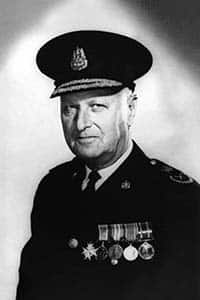 George Archer
George Archer
George Archer came from a long career in the RCMP, and was sworn in as VPD chief constable in 1956. He began by asking the heads of each police branch to send him criticisms, suggestions, and comments regarding their areas, and scheduled meetings with the majority of officers in the 700-person department.
Chief Archer successfully petitioned the City for additional staff, along with traffic jeeps equipped with two-way radios and more motorcycles. He raised women’s salaries to match men’s, and introduced the Dog Squad, which was reported to be the most valuable addition to the Department since automobiles. During his time, the Drunkometer was developed to test drivers on their sobriety.
The chief was renowned for the strictness of his discipline, and was not afraid to speak his mind to the press.
“It never ceases to intrigue me that there are so many apparently normal people who are obviously convinced that they could do much better at running a police force than those appointed to do so,” he said in a March 1960 Province article.
In 1955, Constable Gordon Sinclair was responding to a report of prowlers, and was later found shot to death in his car. He was the VPD’s 7th officer to be killed in the line of duty.
Chief Constable Archer resigned in 1956 and described his experience in a Province article in May of that year: “For six years I have had no social life, no hobbies, no recreation. I have been used to discipline all my life, but these six years were completely, literally, absorbing. For this very reason I believe that my tenure as chief here has been the most satisfying period of my life. It is a great privilege to be able to apply one’s experience to an ailing organization and be able to watch the results.”
Chief Archer retired in 1962 and went on to work for the provincial government.

George Archer
1956-1962
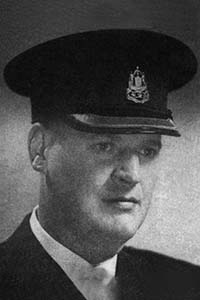 Walter Mulligan
Walter Mulligan
When Walter Mulligan became chief constable in 1947, he was 42 years old – the youngest chief in VPD history. Born in Liverpool in 1904, he came from a police family; his father and other family members served 41 years for the Liverpool City Police. He immigrated to Canada in 1919, with dreams of being a sea captain.
Mulligan worked as a steward on the Canadian National Steamship coastal vessels, then joined the Merchant Marines two years later. He sailed the Pacific, the China Seas, and the Indian Ocean for three years, before returning to Canada to work as a mechanic for the Crawford Battery Co. In 1927, he joined the VPD, and began patrolling Broadway between Main and Granville as a beat officer.
A quote by newly-appointed Chief Mulligan in a January 1947 Vancouver Sun article illustrated his commitment to his work:
“I have no illusions regarding the serious and difficult task you have set before me, but I shall endeavor to do my duty in such a way that will reflect credit upon the board of police commissioners, give the citizens of Vancouver the kind of police service which they have a right to expect and increase the efficiency of the police department and make it the finest and best in Canada.”
Chief Mulligan began by reorganizing the Department, after seven officers and the previous chief were suspended. Gambling and narcotics continued to be an issue in the city, and he campaigned for a metropolitan police force.
Sadly, two officers were killed in the line of duty during this time, trying to thwart a bank robbery. Constables Charles Boyes and Oliver Ledingham were shot while trying to arrest the suspects.
Chief Mulligan was described as courageous, honest, and thoroughly devoted to his duties. He was honoured by national safety groups for his traffic work in the city, and he worked with many service clubs and groups. He was president of the Canadian Association of Chiefs of Police from 1953-54.
In 1954, he threatened to resign, demanding a vote of confidence from the police commission, which they provided. During the historic Tupper probe the following year, he asked to be fired, and the police commission complied in 1955. He left Canada shortly after.
The Tupper inquiry, which examined allegations of corruption and influence-peddling in the police department, would later find Chief Mulligan guilty of corrupt practices.

Walter Mulligan
1947-1955
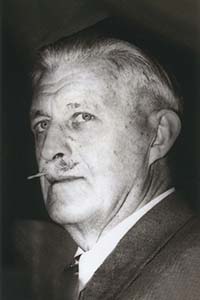 Alexander McNeill
Alexander McNeill
Alexander McNeill was born in Scotland in 1887. He spent two years with the Morayshire Constabulary in Elgin before coming to Canada and joining the VPD in 1912.
Chief McNeill was a quiet, reserved man, with a moustache waxed perfectly to a point on each end. He worked in every area of the Department except Traffic before becoming chief.
As chief, he encouraged greater cooperation between the patrol officers and detectives, and he commended officers weekly for outstanding service or devotion to duty. During his time as chief, he added officers to the Traffic Squad to deal with an increase in accidents and deaths, and he took the police women’s division from two to six female officers.
A Vancouver Sun story in August 1945 described him as not being a “joiner-upper” in fraternal societies: “His job and his home occupy his full attention. After office hours, if the weather allows, he can usually be found in his garden.”
When a probe commenced in January 1947 into the lack of enforcement by the Vice Squad, Chief McNeill was suspended, along with a deputy chief and six other officers.

Alexander McNeill
1945-1947
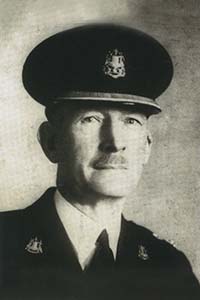 Donald MacKay
Donald MacKay
Donald MacKay served five years with the Glasgow police before coming to Canada. He joined the VPD in 1907. He took leave and served overseas in WWI as a member of the 102nd Battalion, and returned to the Department early in 1919.
After serving as acting chief for two years, Chief MacKay was sworn in as chief constable on August 20, 1941, completing his record of working in every position in the Department. A Vancouver Sun article described him as “a tried and trusty servant of Vancouver,” in an August 1941 article, while others described him as a shy Scotsman.
During his time as chief, prostitution and bootlegging were the biggest issues in the city. In a January 1941 Province article, Chief MacKay assured the mayor that the police department “will exert every possible effort to suppress vice and crime.” By the end of that year, he petitioned the City for 60 more police officers and eight new traffic motorcycles, citing “war conditions, growth in the city’s population, and need for more rigorous enforcement of traffic regulations” as the reasons.
Chief MacKay retired in 1945.

Donald MacKay
1941-1945
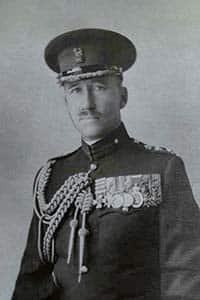 William Foster
William Foster
Colonel William Foster was born in Bristol, England, in 1876, and immigrated to Canada in 1894. He worked with C.P.R. until 1908 when he left to manage a lumber company. He spent three years as Deputy Minister of Public Works in Victoria and ran unsuccessfully in a few provincial elections.
As a captain, Foster was quick to sign up for WWI. He was known for taking risks and when his unit was heading into danger, he was always at the lead. He commanded at Ypres and Somme, and was wounded twice. He received the D.S.O., the Belgian Croix de Guerre, with lion, and the French Croix de Guerre with gold star.
Foster was a charter member of the Vancouver battery of the historic old Garrison Artillery Regiment. It became the 1st BC Regiment after the war, and Foster was given the rank of full colonel, becoming its commanding officer. He would later become a brigadier while continuing as a chief constable.
A January 1935 Vancouver Sun article reported that Chief Foster, “was known as a strict disciplinarian who liked things done right, but he was so nice about it nobody minded.” He led the force during trying times and instilled new spirit, morale, and discipline, leaving it strong, capable and efficient.
During his time as chief, he was given funding for a modern identification room at police headquarters, which included a one-way glass partition for suspect line-ups.
Chief Foster was a mountain climber and one of the first to reach the summit of Mount Robson. He led the first party that ever reached the peak of Mount Logan in 1925.
Chief Constable William Foster resigned in August 1941 after a two-year absence to command the Saskatchewan military district in WWII efforts. With no end in sight for the war, he decided it was not in the best interests of the Department to continue as chief.
“He assumed control of the department at a critical time in its history and filled the office of chief with dignity and ability. I am sorry to see him go, but I am glad to see his ability used in a more important capacity by the government,” said Magistrate McQueen in a 1941 Province article.

William Foster
1935-1941
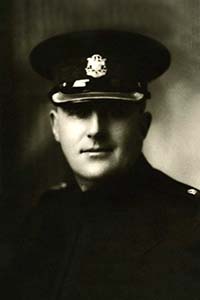 John Cameron
John Cameron
John Cameron was sworn in as chief constable of the Vancouver Police Department in February 1933. Born in Lumsden, Aberdeenshire, Scotland, he came to Canada in 1907. He served three years with the Edmonton Police before joining the VPD in 1911.
Chief Cameron came from a policing family, with three brothers also serving as police officers – two in the UK and one in Hong Kong.
The Chief was known for his integrity and high sense of duty throughout his unique and distinguished career, as well as his personal bravery while apprehending some of the most notorious criminals. His name was both feared and respected in the criminal world.
As a constable in 1917, he was wounded and lost the sight in one eye by the same assailant that killed Chief Malcolm MacLennan and an eight-year-old boy.
Cameron left the VPD to serve as chief constable of the New Westminster Police in 1929, but returned as chief constable of the VPD in 1933.
Chief Cameron was a prominent figure in Canadian sporting circles as an award-winning track and field athlete, even representing Canada at the Olympic Games.
Chief Constable Cameron resigned in 1935. He faced charges of corruption but was later exonerated.

John Cameron
1933-1935
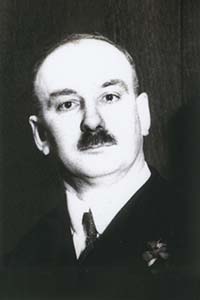 Charles Edgar Edgett
Charles Edgar Edgett
Colonel Charles Edgar Edgett, D.S.O., V.D., became the 14th chief constable of the Vancouver Police Department in 1931. Born in Moncton, New Brunswick, in 1882, he served with the Northwest Mounted Police from 1900 to 1904.
He went on to graduate from Toronto University, and was granted a commission in the Canadian militia in 1906. While serving with the Canadian Expeditionary Force during WWI, he received the Distinguished Service Order at the Battle of Vimy Ridge, and the Victorian Decoration for long service as an officer. From 1920 until the Canadian Legion was formed, he was the B.C. representative on the Dominion Command of the G.W.V.A.
Colonel Edgett became a fruit rancher in Vernon, and represented Okanagan growers in various unions and associations. He served on the Vernon Municipal Council, and worked as a warden at New Westminster Penitentiary for two years before becoming chief.
At the time Chief Edgett was sworn in, Vancouver was only 43 square miles, with roughly 250,000 residents, and a police force with 350 officers.
Chief Edgett had a soft spot for youth, and advocated for separate institutions for adult and youth prisoners.
“They come in day after day, fine young chaps who have simply not had a chance,” he said in a November 1931 Province article. “We do all we can but it is exceedingly difficult to keep them from the influence of the hardened criminal who boasts of his exploits and tries to teach younger inmates his tricks.”
In another Province article that same month, Chief Constable Edgett was described as, “…undoubtedly a fine fellow. He can recite the Habitant poetry of Drummond better than most people; he is a fruit farmer of note and ability, as well as being a general farmer, a politician, and a veterinarian. A sort of all-round bird.”
During his time as chief, short-wave police radios were installed in each police car. The Police Bureau of Science began, headed by Inspector John Vance, who was renowned worldwide as a leading criminologist in the scientific detection of crime.
Chief Edgett had a difficult relationship with the mayor during his time in the role. Despite support for the Chief from the Police Commission and Vancouver citizens and business owners, the mayor chose to dismiss him in January 1933.

Charles Edgar Edgett
1931-1933
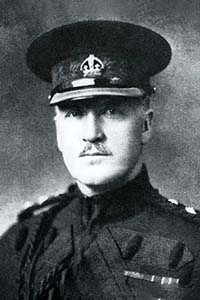 William Bingham
William Bingham
William Bingham spent 24 years with the London Metropolitan Police, including three years as chief of their 500-member mounted force, before joining the Vancouver Police Department. When the Point Grey and South Vancouver police departments amalgamated with Vancouver in 1929, he became VPD Chief Constable.
Chief Bingham immediately petitioned the City for 50 additional officers, a police garage, a new police boat, seven new “prowler” cars, 21 new motorcycles, and six new telephone boxes.
School safety patrols and auxiliary police officers were just two of the initiatives that Chief Bingham put forward during his time as chief. He also studied and was supportive of using airplanes for police work.
Guided by evidence from an earlier police enquiry, Chief Bingham spear-headed a sweeping reorganization of the Department, including suspending six detectives without pay.
Reacting to rumours attacking his integrity, Chief Bingham was quoted in the January 12, 1929 edition of The Vancouver Sun: “My record is open for everyone to examine,” said he, “and there is nothing in it of which I have any reason to be otherwise than proud.”
Chief Bingham resigned in the fall of 1931. When he was asked why he was retiring, he replied that he was “old and tired.”

William Bingham
1929-1931
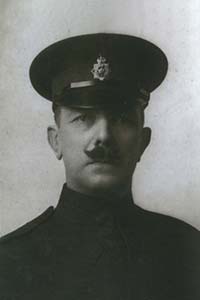 Henry “Harry” Long
Henry “Harry” Long
Henry “Harry” Long was a war veteran, who served in the Imperial Army in England, Indian, and South Africa, and was awarded a Royal Human Society media for heroism. He joined the VPD in 1907 and became chief constable in 1924.
He immediately declared his goal of making the Vancouver Police Department the best in North America, and was quoted in the Vancouver Daily World in February 1924 saying, “We will keep working until Vancouver is proud of us.”
The January 28, 1924 edition of The Province reported the one thing that Chief Long would not tolerate was “drinking among the members of the force. The men under him, he said, must at all times be sober, courteous and efficient.”
A police probe in 1928 looked into the clean-up of Chinatown’s morality and gambling activities. Some police officers were dismissed, but Chief Long was exonerated of any wrongdoing.
When the South Vancouver and Point Grey police departments amalgamated with Vancouver in 1929, Chief Long stepped down as chief and returned to his inspector rank. He retired from the VPD on January 1, 1932.
Chief Long died on February 5, 1948.

Henry “Harry” Long
1924-1929
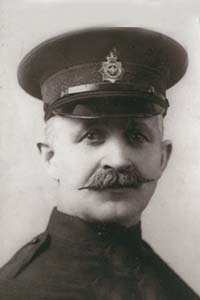 James Anderson
James Anderson
James Anderson became chief of the Vancouver Police Department in 1920. He left Scotland as a boy, and worked in San Francisco and the Yukon gold rush before coming to Vancouver and joining the VPD in 1903.
He told the Vancouver Daily World when he was hired that his plans were to clean up the city.
“Fortunately we have photographs and records of every known crook on the continent. These will be shown to every man on the force and every available man will be put on night duty in the four quarters of the city with a view of entirely stopping these hold-ups and series of petty thieving. I am determined, before it becomes an epidemic, to clear out every known crook in the city.”
Chief Anderson had a kindly heart and a sympathetic ear, as well as an international reputation as one of the greatest identification experts of his time. He developed a filing system with Detective Herbert Goodmurphy that was so efficient they could locate a single fingerprint out of thousands in just a few seconds.
The chief also began a museum of souvenirs and items related to crime, like photographs, burglar tools, and weapons. It was believed to be the most comprehensive local criminal museum in North America.
On Christmas night in 1923, Chief Anderson suffered a concussion in a collision with a streetcar. He resigned as chief in January 1924 because of his injuries. After a time, he returned to his inspector rank and was in charge of identification work.

James Anderson
1920-1924
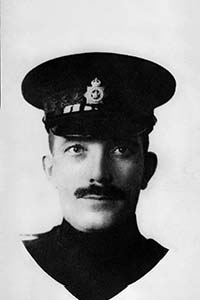 William McRae
William McRae
William McRae joined the VPD in 1902, rising to chief constable in 1917, after the tragic death of Chief Malcolm MacLennan.
When he was appointed chief, The Vancouver Sun described Chief McRae as having “…an excellent record and has for years been considered one of the most able men in the department. Like his predecessor he is personally popular with the members of the force, as well as with the general public.”
During his tenure, prohibition was in effect, and gambling in the city was an issue. Gangs of hoodlums were stealing cars and committing robberies. The Dry Squad was formed to tackle bootlegging and performed regular raids.
Traffic control was also a major problem, as there were no automatic traffic signals.
VPD officers still had wartime salary cuts and only two days off a month, and morale was poor. Two more women joined the ranks during these years.
Chief McRae resigned in 1920 due to ill health. He later went on to work for the federal government and then for the Point Grey Police.
He died November 6, 1958.

William McRae
1917-1920
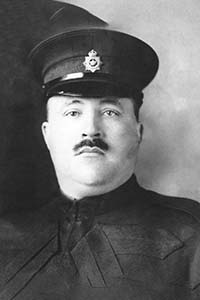 Malcolm MacLennan
Malcolm MacLennan
Malcolm MacLennan joined the Vancouver Police Department in 1901 and rose through the ranks to become chief constable in 1914. He was popular and well-respected, both in the community and with his officers.
As Chief, he was faced with a staffing shortage, as 14 officers took leave to fight in WWI, and the Department suffered the loss of another officer killed in the line of duty when Detective Richard Levis was killed in August 1914. While investigating a stabbing, he was shot and killed by the suspect.
Chief MacLennan was progressive, lobbying for medical treatment for drug users, instead of treating them as criminals, and he called for stiffer penalties for people convicted of selling drugs. At his insistence, officers who worked seven days a week were given two days off a month. He hired Raiichi Shirokawa, a Japanese Canadian and the Department’s first officer of visible minority.
On March 20, 1917, Chief MacLennan was called away from his 10-year-old son’s birthday party, when a landlord/tenant dispute resulted in gunfire from the drug-addicted tenants, wounding the landlord, a police officer, and an eight-year-old boy. Following a stand-off, the Chief took the lead as he and his officers stormed the apartment, chopping through the door with a heavy fire axe. Sadly, he was fatally wounded.
The Vancouver Daily World described Chief MacLennan as “A man of upright caliber, loved by all who knew him intimately, and honored by all with whom he came into contact in his official capacity, the ‘Big Chief’ had a heart in keeping with his great body.”

Malcolm MacLennan
1914-1917
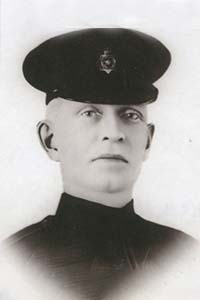 Charles Mulhern
Charles Mulhern
Charles Mulhern was a veteran of the Vancouver Police Department before he was appointed chief constable in 1913. Born in New Brunswick, he became a woodsman in Michigan before coming to B.C.
At the time, the Vancouver Sun reported that Chief Mulhern was not only “… a good, faithful worker and thoroughly acquainted with all the inner workings of this large department, but he has practically made local crime prevention in Vancouver a life study, having worked on our department for seventeen years.”
During his tenure, a new police building was opened on Cordova. He further advanced the identification bureau, appointing Herbert Goodmurphy as the official photographer to work with Detective Anderson.
While a young man working as a woodsman, Chief Mulhern learned to speak Chinook, and he often acted as an interpreter in police court.
Sadly, the VPD would lose a second police officer in the line of duty during this time. James Archibald was shot and killed on May 28, 1913, when he interrupted a burglary.
In July 1914, Chief Mulhern became ill and collapsed in his office. He appeared to be making a recovery by late fall of that year, but relapsed.
In July of 1913 when the Chief became ill, The Province described him as:
“A lean man, with fair hair – turning grey – and blue eyes, they are at once piercing and kindly, Chief Mulhern holds not only the confidence of the city, but the loyalty of his men. There is seldom a harder position to fill than that of a man who has risen from the ranks to the command of his former equals. Mulhern did this and is as popular today with the very men with whom he entered the service as he was in a private’s uniform ten years ago. He is not a rigid disciplinarian and yet every man springs promptly to attention and salutes when the chief passes.”
In November, another police officer lost his life while on duty. Constable John McMenomy was only 22 years old and was electrocuted while trying to repair a street lamp.
Chief Mulhern died on January 3, 1914.

Charles Mulhern
1913-1914
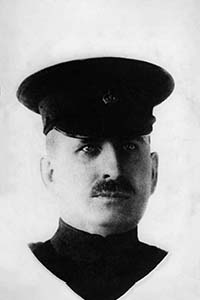 Rufus Chamberlin
Rufus Chamberlin
In 1907, Rufus Chamberlin came from the Dominion Police in Ottawa to become the 7th chief of the Vancouver Police Department.
During his time as chief, the city was facing high unemployment and many of the residents blamed the Asian community. A mass protest in Chinatown in 1907 turned into a riot, with rocks thrown through windows. Police restored order and there were surprisingly few injuries.
Chief Chamberlin hired the first female officers in 1912. He also ensured all officers were trained in first aid, and formed a fingerprint section in 1908.
In 1911, the Department had grown to 126 officers, and a police boat was purchased to patrol the waterfront and stop the flow of opium coming in from merchant ships.
Labour unrest resulted in another riot, where the police response was seen as an over-reaction. It caused a serious rift between police and the labour movement for many years.
In 1912, the Vancouver Police Department experienced the first line of duty death of a police officer. Lewis Byers, who was only 20 years old, died in an exchange of gunfire with a drunken felon.
Chief Chamberlin was president of the Canadian Association of Chiefs of Police from 1911-1912.
He resigned from the Department in 1912 to go to work for the Canadian Pacific Railway. The Province reported in November 1912, that “in Chief Chamberlin’s five-and-a-half years, the entire department had done very effective and efficient work and the personal loyalty of the men is particularly satisfactory.”

Rufus Chamberlin
1907-1912
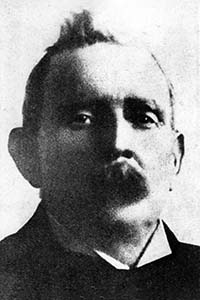 Colin Chisholm
Colin Chisholm
Colin Chisholm was a retired superintendent from the Thames Division of the Metropolitan Police before coming to Canada in 1899. He became chief constable of the Vancouver Police Department in 1906.
He was described in the Daily News Advertiser in July 1906 as “a man of 60 years of age, but might be taken to be several years younger. His hair and moustache are quite grey, but he carries himself with a decidedly military bearing, and a pair of keen eyes miss little that is going on round him.”
During his tenure as chief, three horses were purchased to form the Mounted Squad, and educational and medical examinations were brought in for all police applicants. In 1906, a red light district was set up by people fleeing the San Francisco earthquake, and in 1907, it became illegal to deal drugs in the city.
Chief Constable Chisholm resigned due to ill health in 1907, and died a few months later on October 14, 1907.

Colin Chisholm
1906-1907
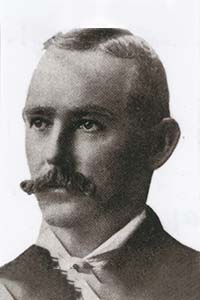 Samuel North
Samuel North
Samuel North was born in Ontario in 1861 to an Irish father and Canadian mother. He came to Vancouver in 1886 and joined the VPD ten years later. In 1901, he became chief constable of a Department of 21 officers with poor morale, too few officers, and a police station in deplorable condition.
Chief North believed if his officers looked professional, they would act professionally, so he clamped down on sloppy appearances, and dismissed any officer found drinking on duty. Performance and morale improved dramatically in six months.
Though he had little formal education, Chief North was very progressive. During his time as chief, call boxes were set up, a horse-drawn patrol wagon meant officers didn’t have to walk to the outer areas of the city, and an auto ambulance was purchased. The chief also pressured city council for a new building, resulting in the purchase of land in the 200 block of E. Cordova and the opening of a new building in 1904.
At the time, Vancouver Police officers chiefly dealt with fights between loggers and miners in the camps. During this time, the Department began taking photos of every criminal who came through the jail, filing them away for future reference.
Chief Constable North retired in 1906 to go into private business, leaving the Department in much better standing than when he began his tenure.

Samuel North
1901-1906
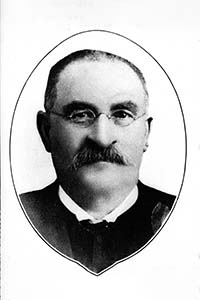 John Stewart
John Stewart
John Stewart returned as chief constable in 1896, and inherited many of the same crime issues still prevalent in the city.
In 1900, Chief Stewart made a public comment regarding prominent members of Vancouver’s churches frequenting the red-light district, which caused a backlash.
He resigned in ill health in 1901.
Chief Stewart died on July 15, 1906. His obituary was published in Vancouver World in July 1906:
“As a navigator and as peace officer he was fearless and his splendid physique added to the respect with which his orders were received, but withal he was one of the most generous and large-hearted men that ever walked and regret over his departure, though he had approached close to the allotted span, being 68 years of age, will be very deep.”

John Stewart
1896-1901
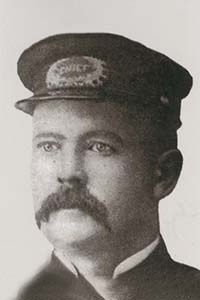 John McLaren
John McLaren
John McLaren was appointed the second chief constable of the Vancouver Police Department in February 1890. At the time, Vancouver Daily World reported that “Sergeant McLaren’s reputation is an enviable one – no man can say a word against his character.”
During Chief McLaren’s time in the position, Vancouver experienced a rash of safes that were blown up in safe-crackings, and traffic control was becoming a problem, which resulted in a speed limit set for cyclists.
Chief McLaren retired from his position in 1895. He later rejoined the force in 1919 as an elevator attendant.

John McLaren
1890-1895
 John Stewart
John Stewart
The first police officer of the Vancouver Police Department was a former sea captain from Prince Edward Island. He was working as a night watchman before he was hired in 1886 as a police officer, sworn to protect the 500 residents of Vancouver, formerly known as Granville.
For one month, he was a one-man operation, until the Great Fire of 1886 destroyed the city, and Jackson Abray, V.W. Haywood, and John McLaren, were pressed into service. Stewart became chief, and they worked from a tent at the foot of Carrall Street while Vancouver was rebuilt.
During Chief Stewart’s tenure, there were issues with anti-Chinese racism, opium dealing and use, and prostitution.
Stewart was accused of taking bribes, and he resigned. An investigation cleared him, and he later returned as Chief in 1896.

John Stewart
1886-1890
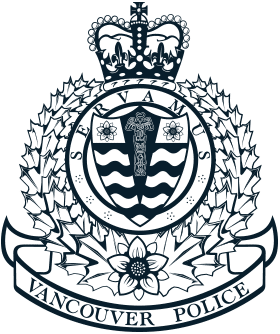
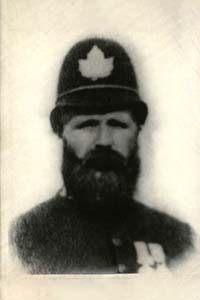 William Ward
William Ward
